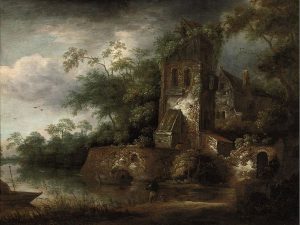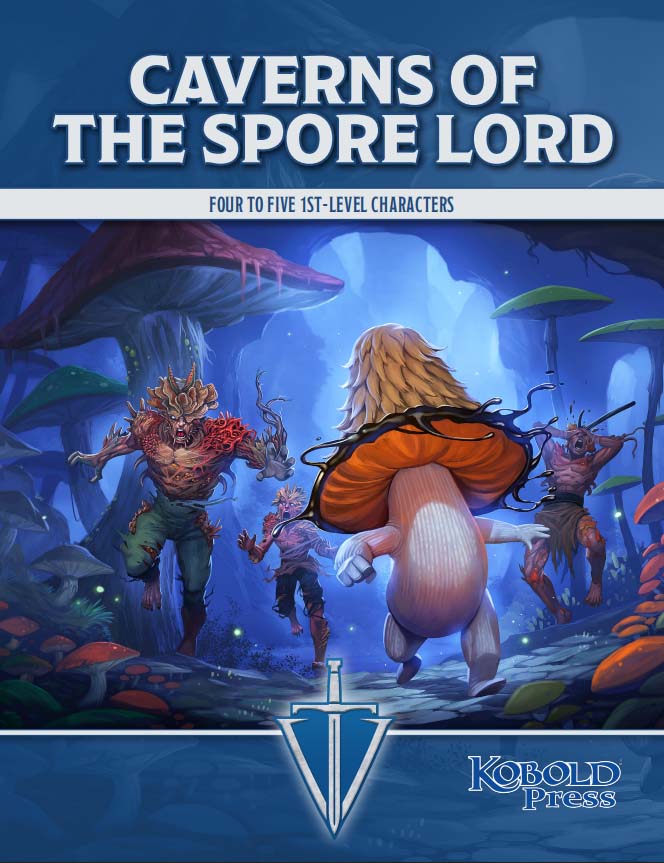 Journeys are part of the myths we try to capture in RPGs. From the Odyssey and Anabasis of the Greeks, to Huck and Jim’s trip down the Mississippi, to films such as The Hidden Fortress and Saving Private Ryan, journeys serve as both vehicles for adventure and as metaphors for the heroes’ movement toward self-discovery.
Journeys are part of the myths we try to capture in RPGs. From the Odyssey and Anabasis of the Greeks, to Huck and Jim’s trip down the Mississippi, to films such as The Hidden Fortress and Saving Private Ryan, journeys serve as both vehicles for adventure and as metaphors for the heroes’ movement toward self-discovery.
RPGs don’t focus much on internal journeys to self-improvement, but the journey is still a fine tool for adventure. The best approach is to deal with the literal journey from point A to point B and let players apply their own symbolic meaning to the trip, if they choose.
Even a straightforward journey isn’t about interminable walking or riding; there’s no excitement in that. It’s about what characters meet along the way.
Here are five basic types of on-the-road encounters.
- Random encounters
- Flavorful/worldbuilding encounters
- Encounters that channel the travelers toward a specific locale where another encounter awaits
- Friendly travelers or creatures
- Unfriendly travelers or creatures
Random Encounters. Games have moved away from random encounters over the years, but there are still good reasons to use them, in the right circumstances. I’ll leave it at that for now, because I intend to dig into this topic in detail next week.
Flavorful/Worldbuilding Encounters. What’s a trip without a little sightseeing? Rivers, canyons, waterfalls, cliffs, deep forests, and burning deserts offer beautiful or frightening vistas. Colorful descriptions of natural wonders flesh out the world and make it feel more real.
Colorful descriptions of the world aren’t the same as real encounters, but they can serve a vital function by providing clues to current adventures or, even better, to future adventures. When you need a location for a quest, it’s more fulfilling to send players back to a ruined tower or shadowy gorge that they passed three months ago than to some place they’ve never heard of. Such links make your world feel like a real place.
Enigmas make excellent worldbuilding encounters, too. They might be red herrings, or they might be seeds for future adventures. You don’t even need to know which is the case when you throw an enigma into the characters’ path.
Examples of Flavorful/Worldbuilding Encounters:
- Ruins
- Caves or mines
- Unusual terrain features and natural wonders
- Weather
- Wild animals
- Monster tracks
- Burial sites
- Unused road
- Mysteriously quiet glen
- Remote temple or shrine, either abandoned or still in use
- Territorial markers (skulls, signs, cairns)
- Runestones
- Faces carved into a mountain
- Witches’ marks
- Deactivated golem
- Signs that someone/something is following or preceding the characters
- Oracle
- Ancient battlefield
- Abandoned wagons
- A dozen dead horses
Channeling Encounters. RPGs are about overcoming difficulty and dealing with crises, so no one should expect the road to be clear and easily traveled. Obstacles that can be skirted with a quick detour or overcome with a few die rolls, however, are a waste of everyone’s time. Obstacles that lead characters to change their plans or push them onto a different, less desirable route are best.
The point of channeling characters onto a different route is not to delay them or to frustrate the players. It’s to build a sense of foreboding. Characters who planned their route to bypass the unsavory witch of the woods might change their minds when a companion falls ill mysteriously and needs rare herbal medicine. A supernatural blizzard drove the Fellowship of the Ring back from the Gap of Rohan and onto the more dangerous route through the Mines of Moria.
Channeling encounters need to be handled carefully. Players are being herded, but you don’t want them to feel like sheep. You must work to sustain the idea that the characters have choice. Characters chose a particular route because one path looked better than another. A channeling encounter changes that assessment, making a different route look best. If the players come to that realization gradually and on their own, they’ll accept it more willingly than if they run into an impassable roadblock.
Examples of Channeling Encounters:
- Rain-swollen river or washed out bridge
- Early snow in a mountain pass
- Forest fire
- Upheaval (orcs on the move, soldiers hunting for insurrectionists, inquisitors screening all travelers—a few such close calls, each closer than the last, build nicely toward a voluntary change of plans)
- Enemy spies and assassins
- News that high-level monsters have seized the next watering hole or bridge
- A vision of danger or a warning from an oracle
- Plague
- Discovery of an unexpected but inviting shortcut
Friendly Travelers or Creatures. In unsettled times, travelers will band together for safety (remember The Canterbury Tales?). Traveling in company is also a great way to liven up a journey. PCs might even be paid to act as guards or guides if they’ve gone this way before. Travelers’ inns and villages along the way are excellent places to meet and mingle with NPCs. Even when characters avoid inns and travel without other company, they’re unlikely to have the road all to themselves.
Friendly encounters don’t need to be only with humans and demihumans, as the list of examples demonstrates.
Examples of Friendly Travelers and Creatures:
- Pilgrims
- Settlers
- Hunters
- Adventurers
- Bounty hunters
- Prospectors
- Hermits
- Crazy people
- Circus performers
- Tax collectors
- Tourists
- Merchants
- Inquisitors
- Itinerant duelist
- Wizard on holiday
- Imperial courier
- Funeral procession
- Courtesans
- Government officials
- Lord/lady with retinue
- Wounded veterans
- Someone traveling incognito (a deity?)
- Nomads
- Savages of a type not seen for centuries
- Necromancer traveling with undead servants
- Talkative trees
- Migrating giants
- Gnolls more interested in trading than fighting
- Kobold militia tracking deserters
- Manticore with thorn in paw
- Werebear chained to rock
- Mindflayers buying any and all books
Unfriendly Travelers or Creatures. Not much needs to be stated here, since hostile encounters are the type most familiar to players and DMs. Any of the encounters listed above and lots more can lead to drawn blades. That includes encounters that started out pleasantly before turning ugly, and NPCs who seemed friendly before revealing themselves as blackguards. Those should be rare; if most NPCs met on the road turn out to be villains, players will quickly stop trusting everyone.
Every journey has a destination, and that’s usually where the main adventure begins. But there’s no reason why getting there can’t, as they say, be half the fun.
About the Author
Steve Winter has been involved in publishing Dungeons & Dragons in one capacity or another since 1981. Currently he’s a freelance writer and designer in the gaming field. You can visit Steve and read more of his thoughts on roleplaying games, D&D, and more at his website: Howling Tower. If you missed the first of these entries on the Kobold Quarterly site, please follow the Howling Tower tag to read more!


“A supernatural blizzard drove the Fellowship of the Ring back from the Gap of Rohan and onto the more dangerous route through the Mines of Moria.”
Just to pick a nit, the Fellowship was driven by the blizzard turn back from the mountain pass by Caradhras (the name of which escapes me ATM), not the Gap of Rohan, which they previously decided was too dangerous because of the proximity of Isengard.
I stand corrected. Thanks.
Great article! I’ll be sure to use this in my Kingmaker campaign.
Just a wonderful article about the use of travels.
Thanks a lot to remind us of this important story-element.
Excellent article. Good solid fun ways to nudge/coax the players in a new direction without taking away any of their fun and making the world seem more realistic. Really looking forward to next weeks random encounter article.
This is really great advice, especially for any DM’s looking to get out of the dungeon. Thanks! Everyone should check out Steve’s blog at howlingtower.com for lots more advice. I’m really enjoy his insight into gaming.